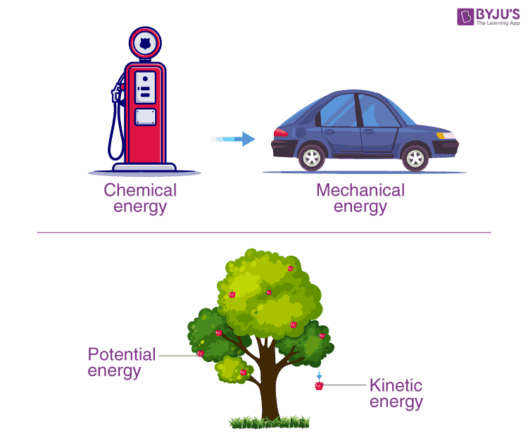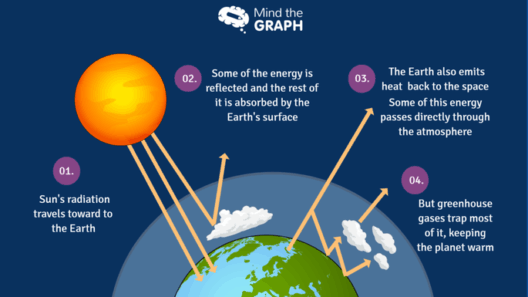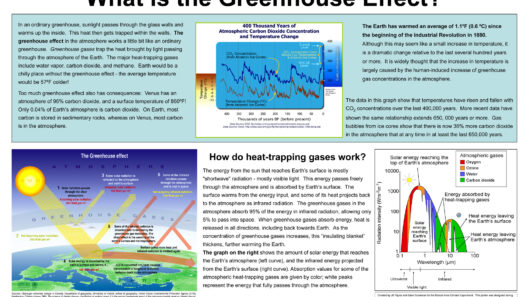Climate change has emerged as one of the most pressing issues of our time, compelling scientists and citizens alike to seek a comprehensive understanding of its mechanics and potential outcomes. Among the myriad phenomena illustrating extreme climate change, the runaway greenhouse effect observed on Venus serves as an alarming case study. This article pensively examines the consequences of such a phenomenon, its implications for Earth, and the psychological drivers behind humanity’s fascination with planetary extremes.
The Runaway Greenhouse Effect: A Cosmic Warning
The greenhouse effect is a natural process whereby certain gases in a planet’s atmosphere trap heat, thereby maintaining a temperature conducive to life. However, on Venus, this process has spiraled out of control, transforming it into an inhospitable environment. Initially similar to Earth with its geological features and potential for water, Venus’s proximity to the sun and a thick atmosphere composed predominantly of carbon dioxide led to catastrophic heating.
As the sun’s energy penetrates Venus’s atmosphere, it is absorbed by the planet’s surface, which, in turn, reradiates this energy as infrared radiation. The dense layer of carbon dioxide traps this heat, creating a feedback loop that escalates temperatures—currently averaging around 467 degrees Celsius (872 degrees Fahrenheit). This dire situation exemplifies the potential consequences of unchecked greenhouse gas emissions, raising critical alarm bells for terrestrial ecosystems.
Comparative Analysis: Earth on the Brink?
Understanding Venus’s atmospheric transformation catalyzes reflection on Earth’s precarious climate situation. As human activities increasingly contribute to greenhouse gas concentrations, we are inadvertently chronicling a narrative that potentially mirrors Venus’s historical trajectory. Key indicators, such as rising sea levels, extreme weather phenomena, and declining biodiversity, suggest that our planet is, to varying degrees, echoing the catastrophic environmental shifts once experienced by our neighboring planet.
A pivotal concern lies in the saturation of carbon emissions. Much like Venus when volcanic eruptions released significant amounts of carbon dioxide, terrestrial activities—including industrialization and deforestation—contribute to a rapidly escalating greenhouse gas burden. The parallels become chillingly apparent as one considers the potential for tipping points: thresholds beyond which climate systems could irreversibly shift toward catastrophic outcomes.
Lessons from an Infernal Environment: Why Does Venus Captivate Us?
The study of Venus goes beyond mere scientific inquiry; it touches upon psychological and existential themes that resonate deeply with humans. The fascination with Venus can be attributed to a mix of dread, curiosity, and a realization of fragility. For many, this extreme example of planetary change evokes a dessert of cautionary tales and philosophical musings on humanity’s trajectory and collective responsibility.
Furthermore, examining the dynamics of Venus fosters a meditative reflection on Earth’s susceptibility to degradation. The chance that humanity, through negligence or indifference, could push Earth into a similar calamitous state ignites a fire of urgency in environmental activism. Our understanding of Venus becomes not just a cautionary tale, but a clarion call for change.
The Societal Implications of Climate Extremes
Beyond the scientific implications, climate extremes—exemplified by the runaway greenhouse effect—profoundly impact societal structures. As resources become scarce and natural disasters intensify, socioeconomic disparities are likely to widen. Vulnerable populations often bear the brunt of climate adversities, leading to displacement, conflict over resources, and increased migration. This intricate web of challenges complicates global politics, igniting tensions as nations grapple with the ramifications of climate change.
Additionally, the psychological impact of climate anxiety looms large. As awareness heightens regarding possible consequences, a collective apprehension emerges. Society finds itself wrestling with a mix of hope and despair—a paradox that fuels activism but can also lead to feelings of helplessness. Thus, the need for informed, resilient communities becomes pressing as they navigate uncertain futures while actively seeking solutions.
Bridging the Knowledge Gap: Moving Toward Solution-Oriented Discourse
To combat the potential trajectory reminiscent of Venus, a robust dialogue must be fostered, combining scientific insights with effective policy-making and public awareness. Initiatives aimed at reducing carbon footprints, preserving biodiversity, and promoting sustainable practices should be prioritized. Informative outreach—grounded in research and directed toward the grassroots—can galvanize community action and activism against climate stagnation.
The path forward must also involve innovative technology aimed at carbon capture and renewable energy sources. By pivoting toward a more sustainable framework, society can help to avert a climate catastrophe evoking the runaway greenhouse conditions of Venus. Such aspirations, if realized, may forge a legacy rooted in sustainability rather than destruction, one that recognizes the interconnectedness of all planetary ecosystems.
In a world where the specter of climate change looms ever larger, the scrutiny of extreme climate phenomena like that of Venus floats to the forefront of both scientific exploration and public discussion. The dual lenses of caution and inspiration can serve to propel humanity toward a future built on resilience, mindfulness, and respect for our planet’s delicate equilibrium. Through this understanding, we can seek to ensure that our legacy does not echo the infernal fate of Venus, but rather celebrates the triumph of our commitment to stewardship of Earth.





